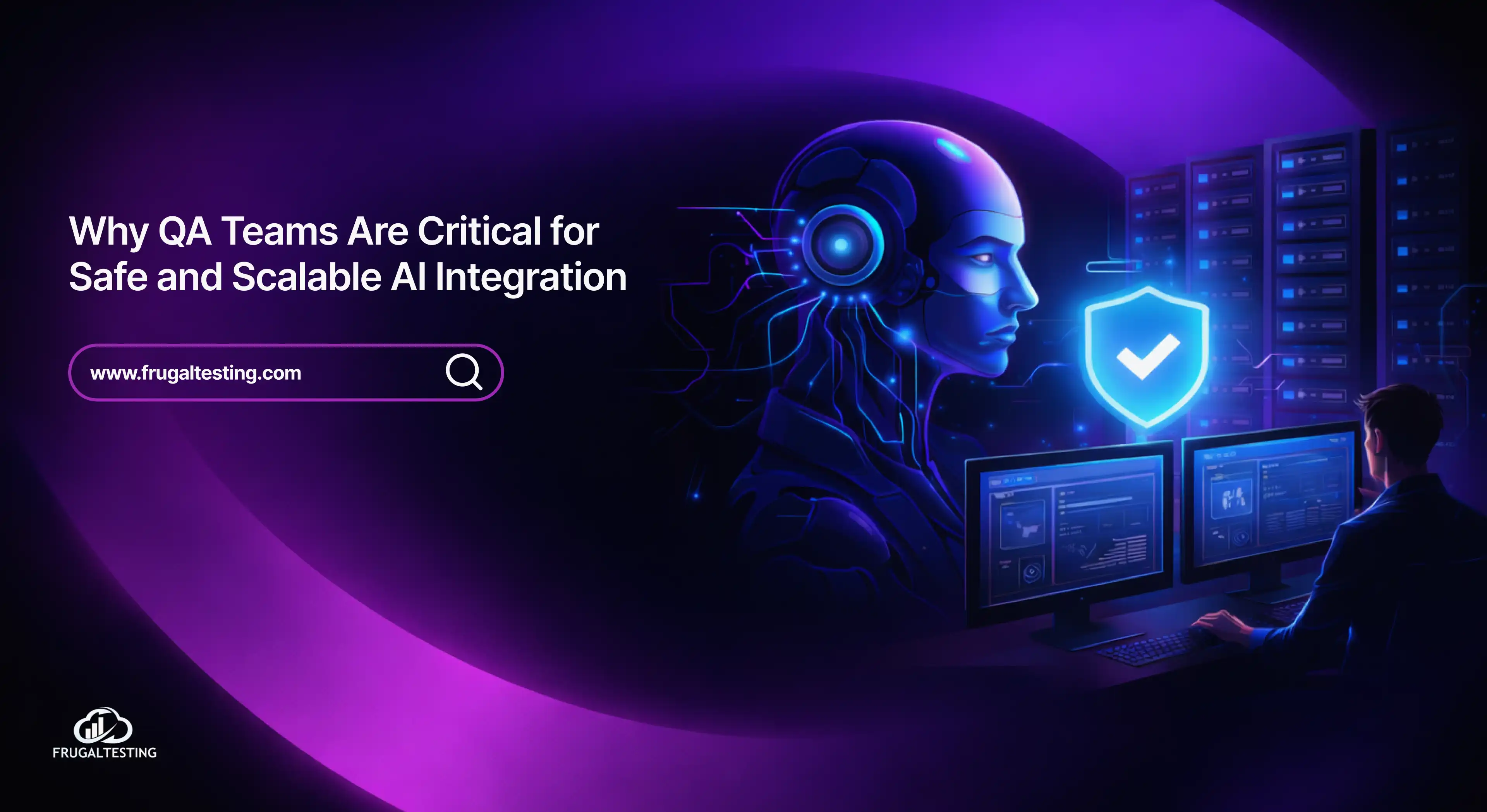Choosing the right testing environment impacts software quality, delivery speed, and operational costs. With digital transformation accelerating across industries, businesses must decide between cloud testing and on-premise testing to meet their unique needs. This guide compares both environments in terms of benefits, limitations, deployment models, performance, security, and cost, helping you determine the best fit for your organization.
💡 Here’s what you’ll learn:
📌What cloud testing is and why it enables faster, scalable QA.
📌When on-premise testing is better for security and control.
📌Key differences in infrastructure and deployment models.
📌Top benefits of cloud-based testing, including automation and cost-efficiency.
📌Common cloud migration and data security challenges.
📌How hybrid testing blends flexibility with enterprise compliance.
What Is Cloud Testing in Software Development?
Cloud testing is a software testing technique that makes use of cloud computing infrastructure and resources. It allows teams to test applications across platforms, networks, and devices without relying on physical hardware.
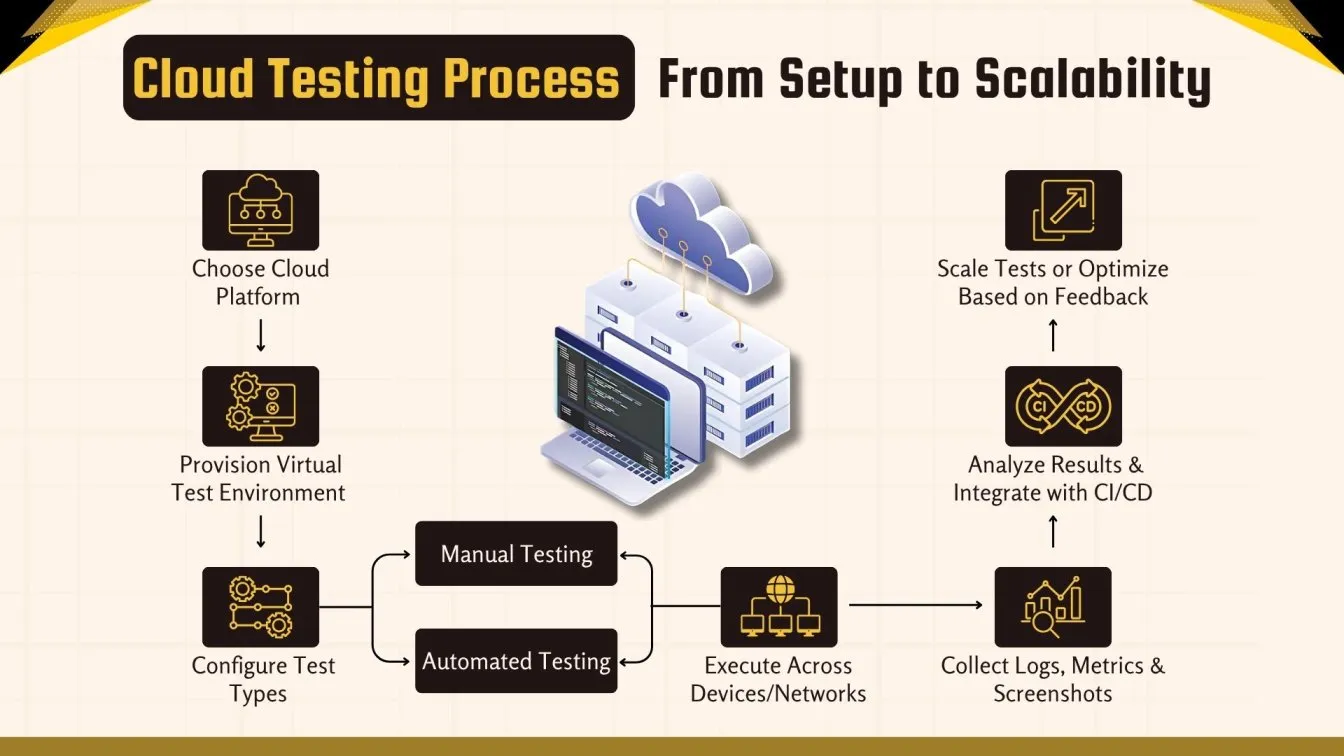
Key Highlights of Cloud Testing:
- Enables instant environment provisioning without relying on physical hardware.
- Facilitates both manual and automated tests across diverse platforms and geographies.
- Uses major cloud platforms like Google Cloud, Azure Test Plans, and AWS Device Farm.
- Accelerates CI/CD workflows through cloud automation.
- Offers strong security with encryption, access control, and compliance.
- Delivers scalable, cost-efficient performance testing.
- Enhances agility in agile testing environments.
- Key factor in cloud vs on premise decisions and migration strategies.
Cloud deployment models offer greater scalability, flexibility, and cost savings. It enables faster setup, seamless scaling, global access, and lower maintenance than on premise testing.
What Is On-Premise Testing and How Does It Work?
On-premise testing is the process of running software tests within an organization’s own physical infrastructure. Unlike cloud testing, all testing tools, environments, and data are hosted locally, giving full control over security, configurations, and compliance.
It typically involves setting up in-house servers, installing testing tools like Selenium or JUnit, and replicating production environments for accurate test execution. Test results are stored internally, ensuring data privacy and regulatory alignment. This approach is ideal for sectors like finance and healthcare, where data sensitivity is a priority.
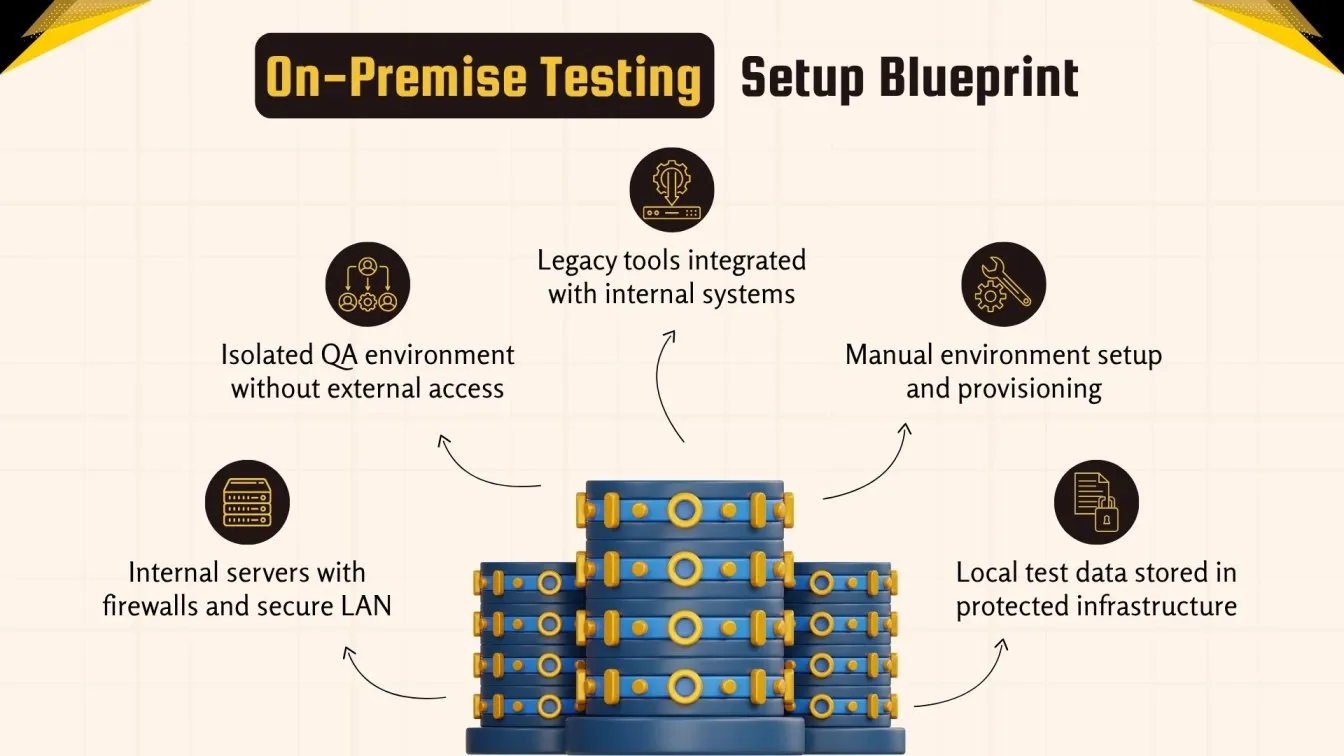
Key Highlights of On-Premise Testing:
- Best suited for businesses with strict security, compliance, or regulatory requirements.
- Infrastructure is fully owned and managed internally, including maintenance, software updates, and hardware provisioning.
- Provides smooth interaction with cloud-incompatible legacy systems.
- On premise cloud solutions sometimes provide hybrid options for gradual cloud migration.
- Lacks the scalability and remote collaboration features of cloud testing.
On-premise testing is ideal for organizations prioritizing data residency, internal governance, and IT autonomy. Compared to cloud testing, it offers tighter control but may lack the scalability benefits of cloud computing.
Key Differences Between Cloud and On-Premise Testing
Choosing between cloud testing and on-premise testing depends on your organization’s goals, IT capabilities, and compliance needs.
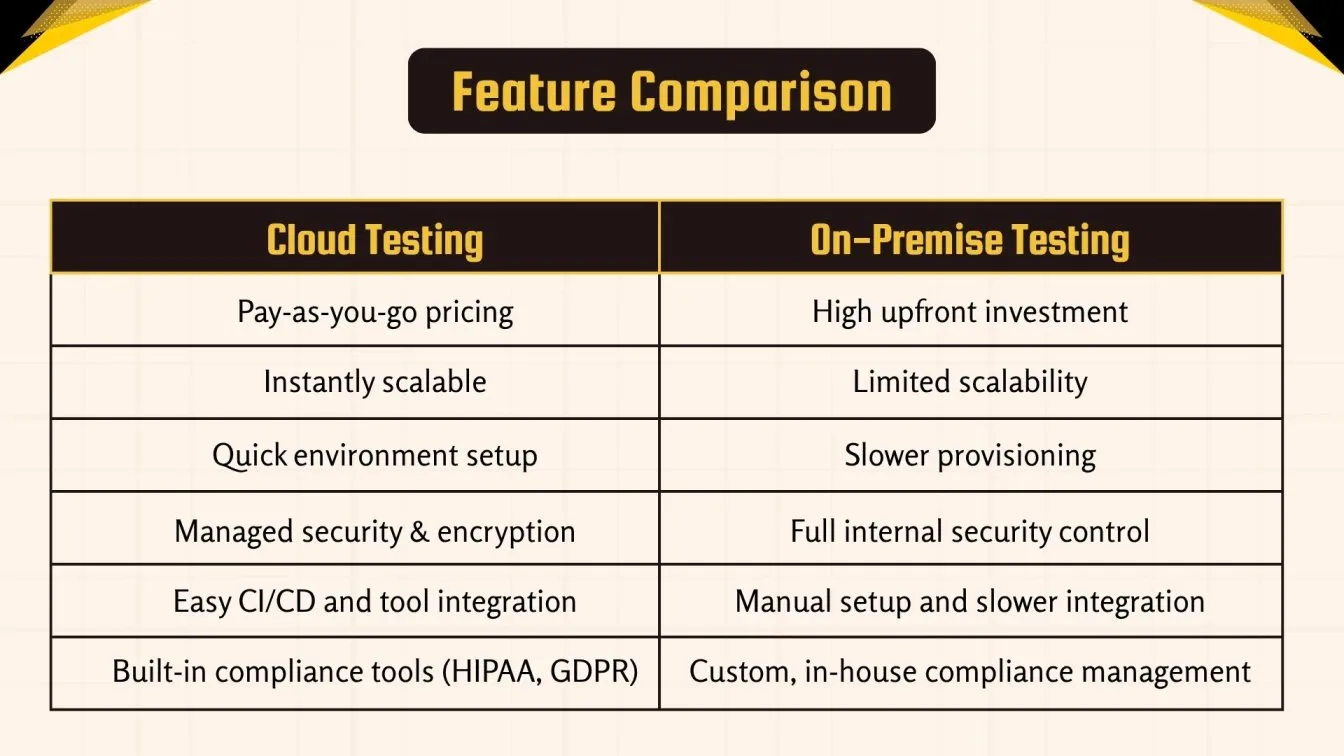
Strategic Considerations for Choosing Between Cloud and On-Premise Testing
- Differ in architecture, cost structure, scalability, and operational flexibility.
- Cloud testing is ideal for teams needing faster time-to-market, AI-driven test execution, and remote collaboration.
- Organizations that value complete control, data residency, or legacy infrastructure are better suited for on-premise testing.
- Decisions ought to be in line with scalability objectives, regulatory standards, and QA approach.
Choosing the right model ensures efficient software testing aligned with your digital transformation goals.
Deployment and Infrastructure
The deployment model and infrastructure setup define how testing environments are provisioned, scaled, and accessed by QA teams.
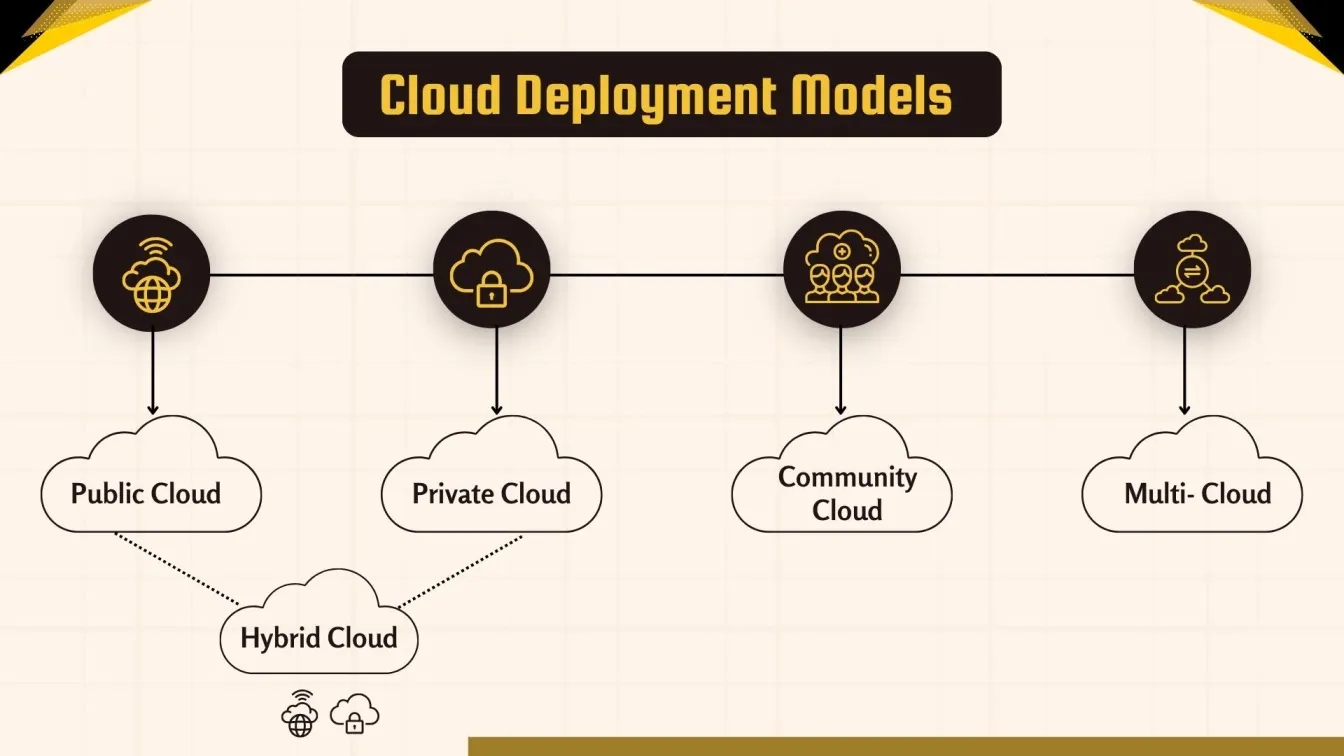
Cloud infrastructure enables rapid provisioning and global scalability, while on-premise environments provide tighter control but with limited deployment agility.
Top Benefits of Cloud Testing for Scalable QA
Cloud testing brings numerous advantages to modern software teams that rely on agility, automation, and distributed development.
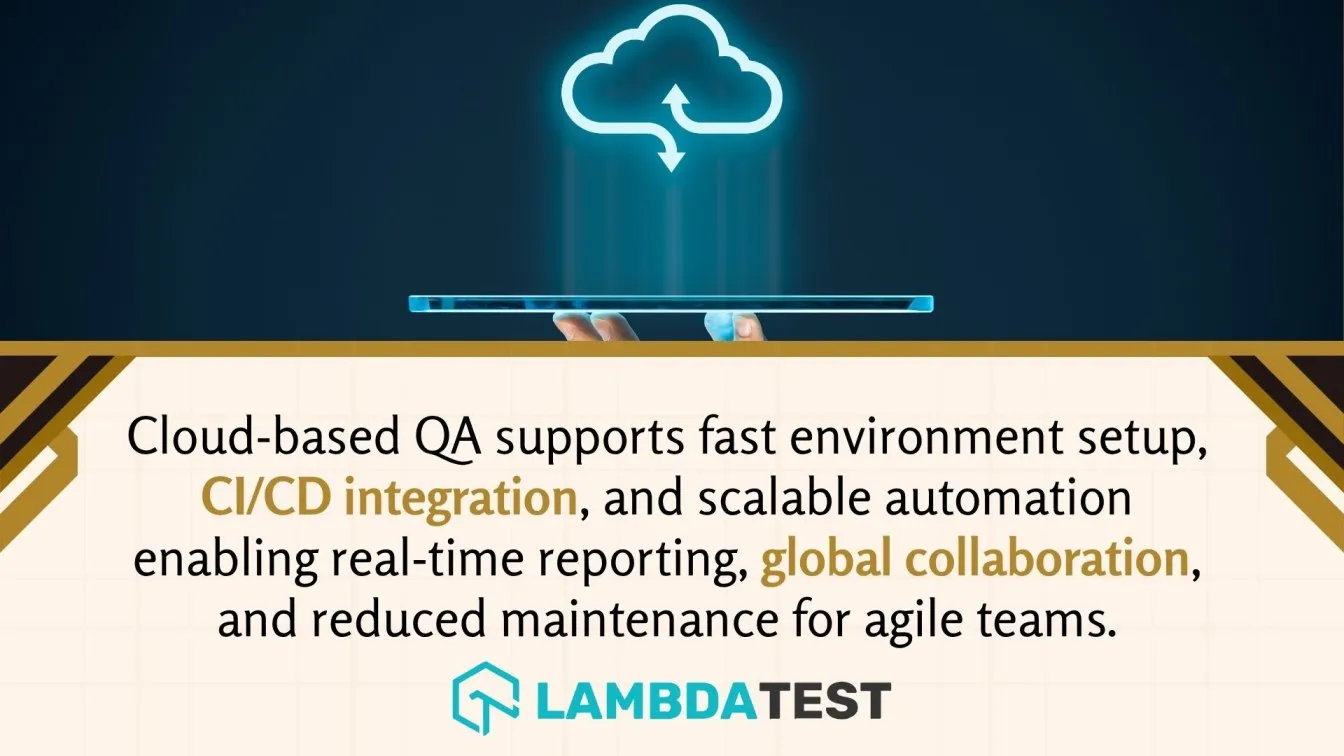
Key Benefits of Cloud Testing Over On-Premise Models
- Accelerates delivery with scalable test environments and enhanced collaboration.
- Benefits of cloud computing include reduced infrastructure costs and faster time to market.
- Supports hybrid cloud benefits models that optimize resource allocation and cost-efficiency.
- Benefits of Virtualization in cloud computing enables fast cloning and deployment of test environments.
- Cloud testing offers quicker deployment, easier automation, and lower costs.
- Cloud provides scalable infrastructure and advanced testing tools.
By adopting cloud testing, businesses gain the ability to scale on demand, reduce costs, and improve software quality through faster, smarter test cycles.
Advantages of On-Premise Testing for Enterprise Control
On-premise testing remains relevant for organizations that require maximum control over data, security, and compliance.
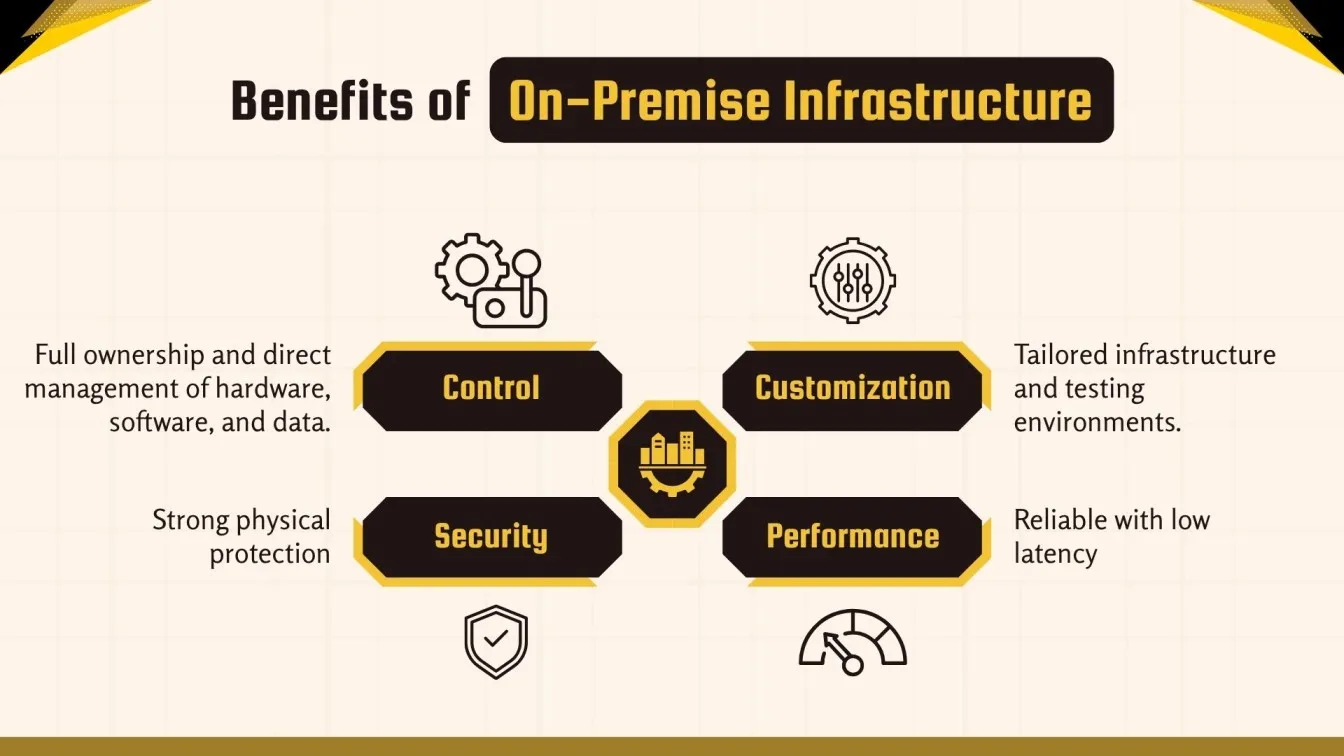
Advantages of On-Premise Testing for Secure Enterprise Management
- Complete ownership of testing infrastructure, software, and access control.
- Ensures compliance with regulations for industries like finance and healthcare.
- Reduces dependence on internet connectivity and external vendors.
- Ideal for organizations managing legacy systems in-house.
- Provides predictable performance without external dependencies.
With full internal governance and control, on-premise testing is ideal for enterprises that prioritize data sovereignty, internal security measures, and long-term infrastructure investment.
Common Challenges in Cloud-Based Testing Environments
While cloud testing is highly scalable, it comes with its own set of challenges that must be addressed during planning and implementation.
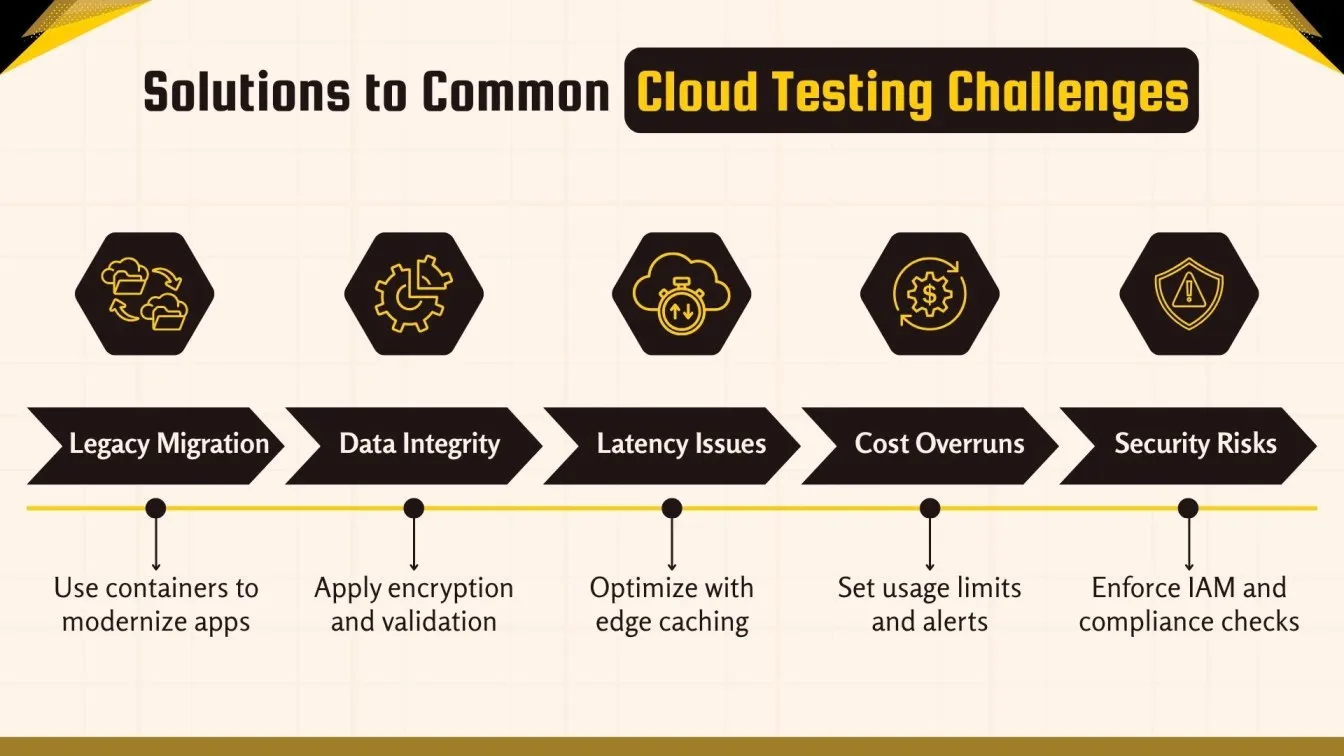
Challenges in Cloud-Based Testing Environments
- Cloud migration challenges include transferring legacy applications and ensuring data integrity.
- Cloud computing challenges may include bandwidth limitations, latency, and cost overrun risks.
- Cloud security challenges arise from misconfigured access and third-party dependencies.
- Cloud data security challenges involve securing sensitive customer and business data.
- Cloud computing security issues and challenges must be addressed with proper configuration and compliance tools.
To overcome these issues, organizations should implement robust cloud security solutions, optimize resource usage, and align testing strategies with cloud-specific best practices.
Limitations of On-Premise Testing in Modern Software Delivery
On-premise testing, though reliable for secure environments, faces challenges adapting to the fast-paced demands of modern software delivery. Its reliance on physical infrastructure can delay test environment setup and limit scalability. Additionally, maintaining hardware and software in-house increases operational costs and reduces flexibility, which can slow down continuous testing and integration efforts vital for agile and DevOps workflows.
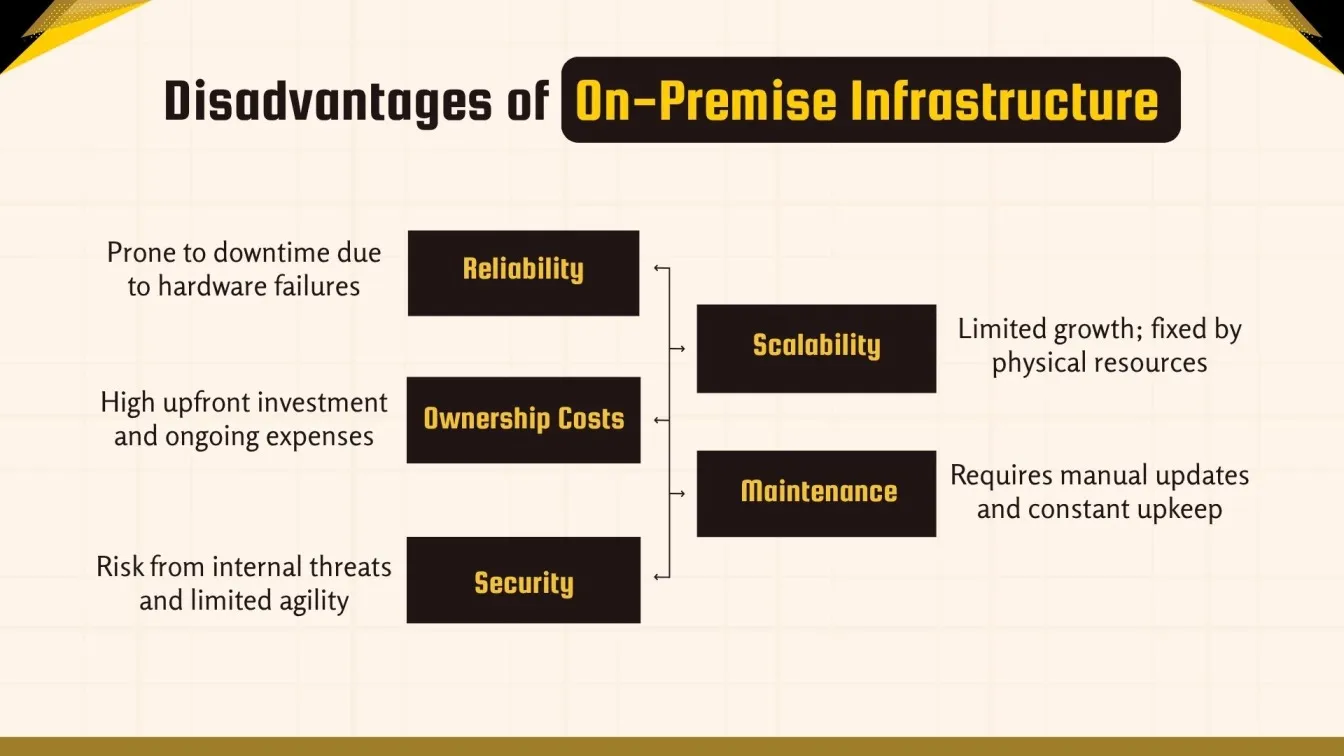
Key Limitations
- High capital expenditure for purchasing and maintaining hardware.
- Limited ability to scale test environments for peak usage or distributed teams.
- Requires manual environment setup and maintenance.
- Slower response to market changes due to static infrastructure.
- Difficult integration with cloud-native DevOps and CI/CD pipelines.
As software development accelerates, many teams find that on-premise testing environments cannot keep pace with the flexibility and efficiency provided by cloud testing solutions.
Cloud vs. On-Premise Testing Cost Comparison
Cost is a critical factor in deciding between cloud and on-premise testing. Each model has its own pricing structure, long-term costs, and return on investment.
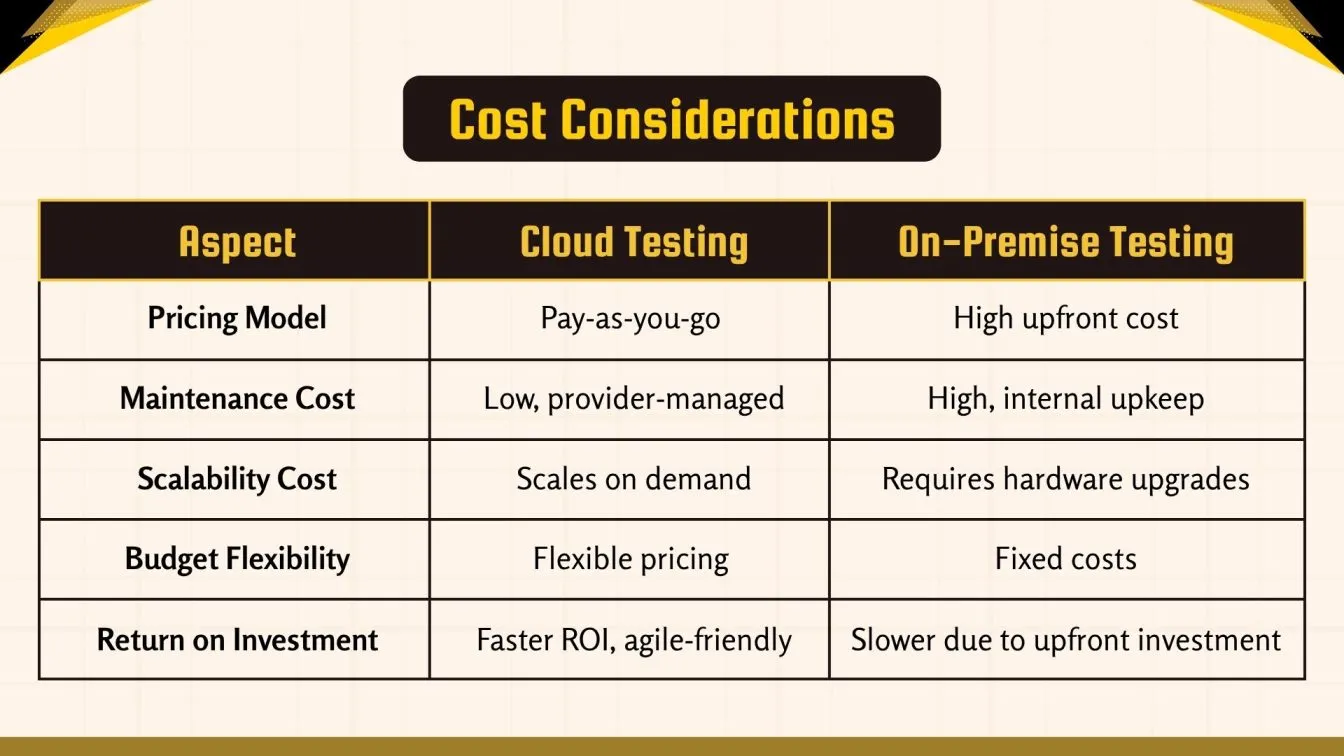
While cloud testing services are more cost-efficient for dynamic, fast-paced projects, on-premise models may suit organizations with long-term infrastructure investments and strict compliance requirements.
Security and Compliance: Cloud vs. On-Premise Testing
Security and compliance are critical when choosing between cloud and on-premise testing, especially in industries like finance, healthcare, and government. Cloud testing offers built-in security features such as encryption, access control, and automated compliance with standards like GDPR and HIPAA. However, it relies on third-party providers.
On-premise testing provides complete control over data protection and internal security policies, making it a preferred choice for organizations with strict regulatory requirements.
Security and Compliance:
Both models can be secured effectively, but the right choice depends on your organization’s risk appetite, compliance obligations, and testing infrastructure strategy.
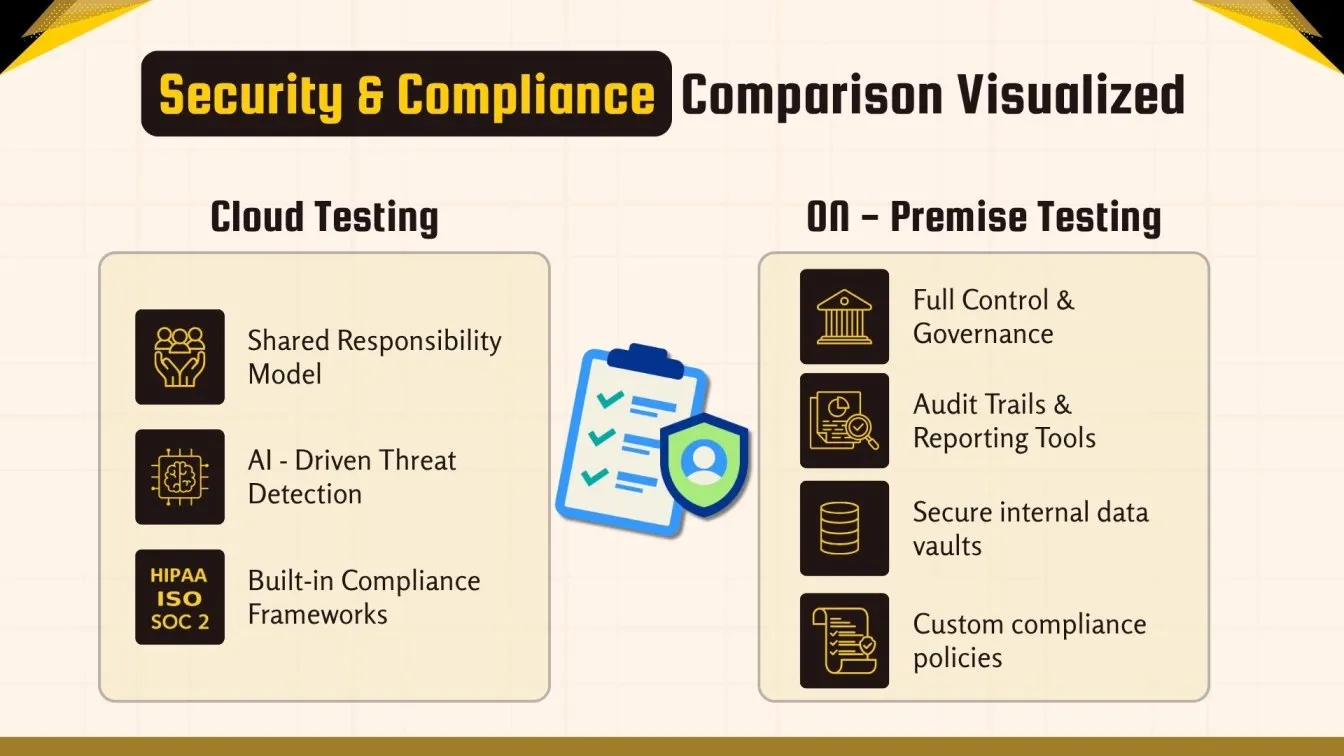
Performance and Scalability in Cloud vs. On-Premise Testing
Modern applications require performance under pressure, making cloud performance testing services a core part of QA strategies.
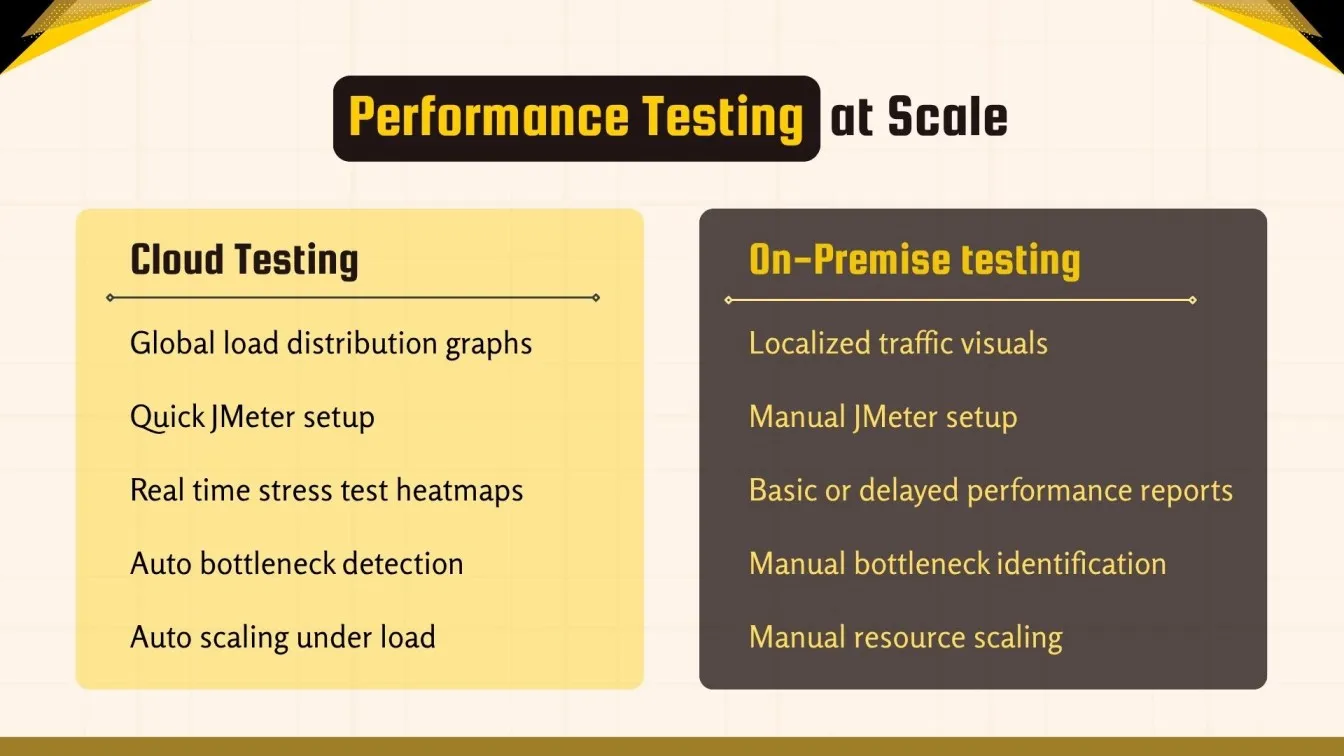
Key Performance Insights
Cloud scalability gives QA teams the ability to simulate real-world conditions at scale, while on-premise testing may face bottlenecks without significant infrastructure upgrades.
Cloud Testing for Agile and DevOps Teams
Cloud testing enables Agile and DevOps teams to quickly provision scalable test environments on demand, eliminating delays caused by physical infrastructure. It integrates seamlessly with CI/CD pipelines, automatically triggering tests with every code commit to support continuous testing and rapid feedback.
By running automated tests across multiple platforms and configurations simultaneously, cloud testing ensures faster defect detection and improved software quality. It also promotes collaboration with centralized test management and real-time reporting, making it essential for efficient Agile and DevOps software delivery.
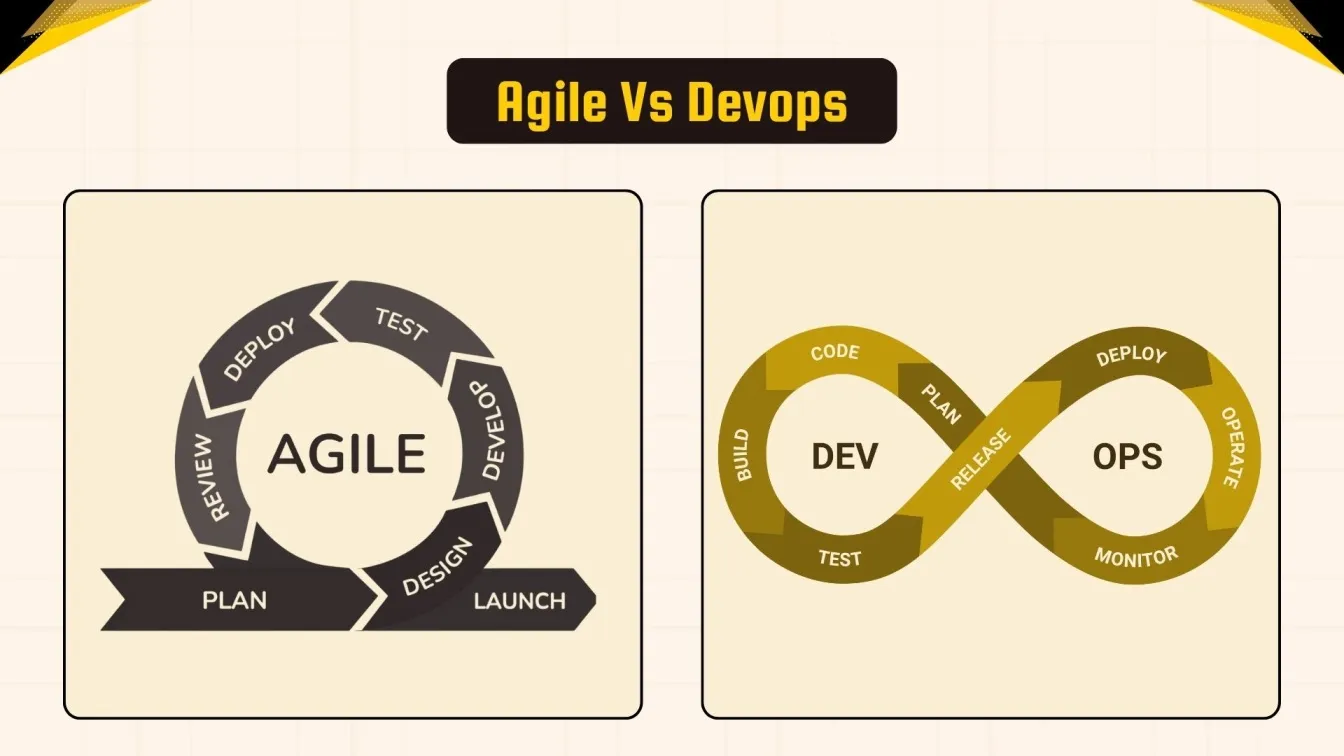
Agile Alignment
- Agile testing benefits from quick test environment provisioning and parallel execution.
- Continuous validation and test automation are key components of the agile testing methodology.
- Agile development testing in the cloud supports version control, containerized environments, and real-time reporting.
- CI/CD pipelines integrate easily with cloud testing services for push-triggered tests and nightly builds.
By leveraging cloud automation and scalable resources, teams can maintain high test coverage, accelerate delivery, and ensure quality in each deployment phase.
Testing Tool Ecosystem: Cloud vs. On-Premise Compatibility
Choosing the right testing tools depends on your environment, cloud or on-premise and the specific testing requirements.
Cloud Testing Tools:
- BrowserStack, LambdaTest, Sauce Labs: For fast, scalable cross-browser and device testing without hardware setup.
- ReadyAPI (Cloud): API testing with easy cloud integration and remote collaboration.
- Jenkins, GitHub Actions: Automate CI/CD pipelines for continuous testing and deployment.
- Applitools: AI-powered visual testing across browsers in real time.
- Maze: Remote usability testing for distributed teams.
On-Premise Testing Tools:
- Selenium, Playwright: Flexible automation tools for secure, internal environments.
- JMeter, K6: Performance testing with full control over test data and infrastructure.
- Postman: API testing preferred for internal networks and sensitive data.
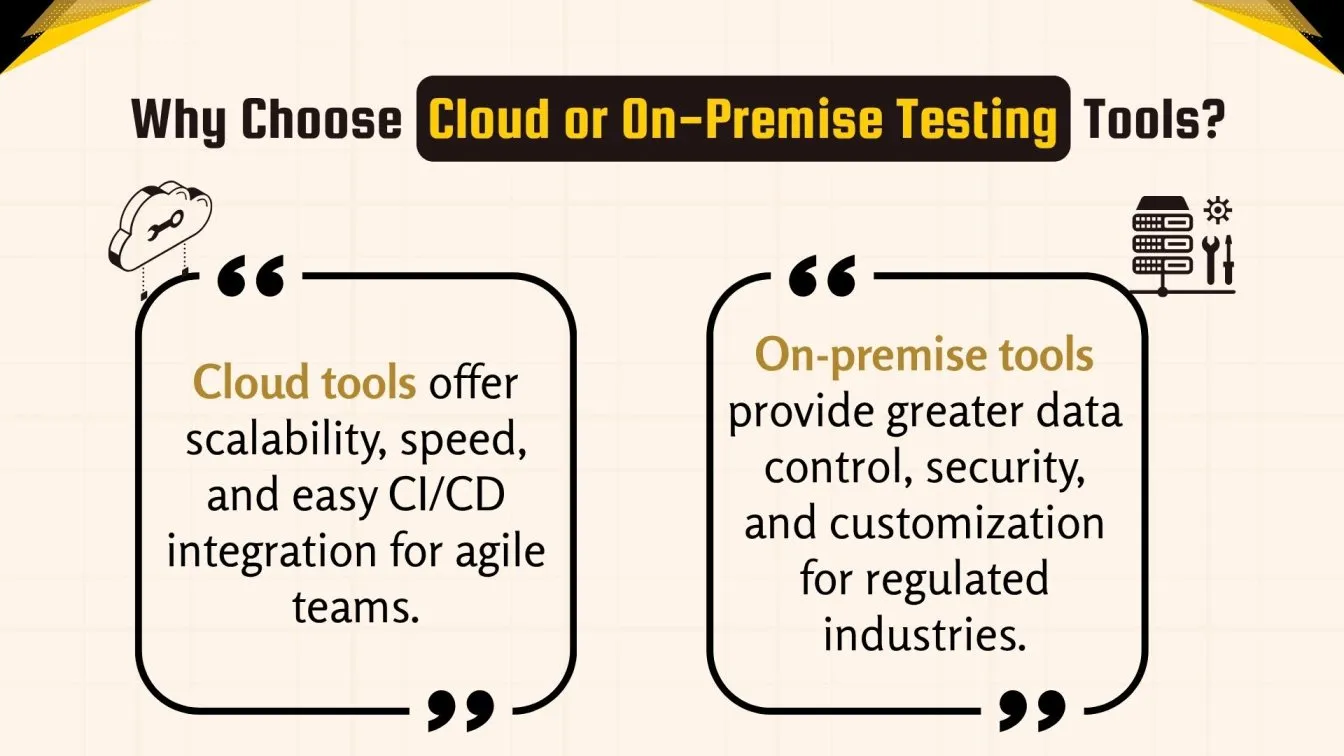
Choosing tools that align with your testing environment, team structure, and automation goals ensures higher efficiency, test coverage, and delivery speed.
Hybrid Testing Model: Balancing Cloud and On-Premise Strengths
A hybrid testing strategy is used by many organizations to get the best of both worlds.
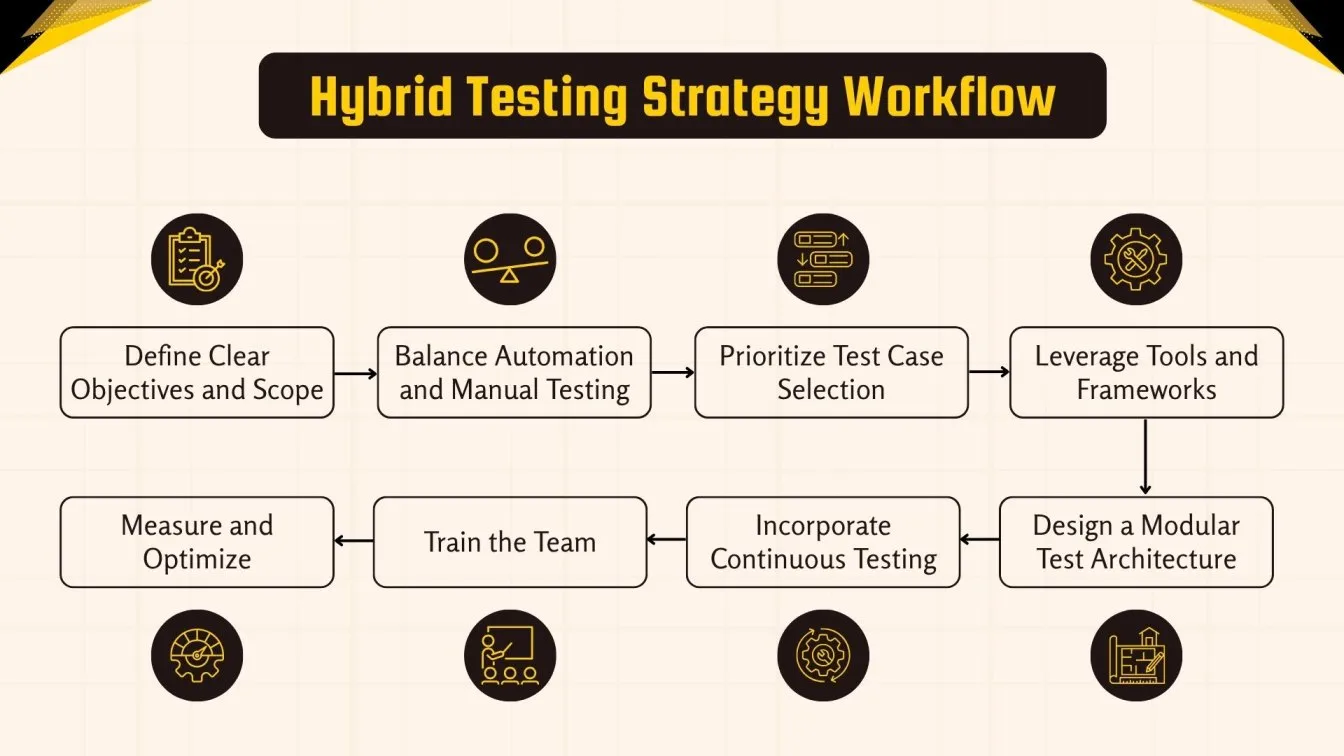
Hybrid Model Strategy
- Regression, compatibility, and performance testing are best done on the cloud.
- On-premise testing is preferred for cyber security testing services or compliance-heavy test scenarios.
- Hybrid environments offer flexibility to shift workloads based on time, cost, and security.
- Cloud migration services help businesses transition from on-premise to hybrid models with minimal disruption.
- Test management tools can centralize reporting and execution across both environments.
This balanced approach helps enterprises maintain agility while meeting stringent regulatory and operational requirements.
Industry Use Cases: Cloud and On-Premise Testing Across Sectors
Different industries adopt testing models based on their business needs, compliance requirements, and development strategies.
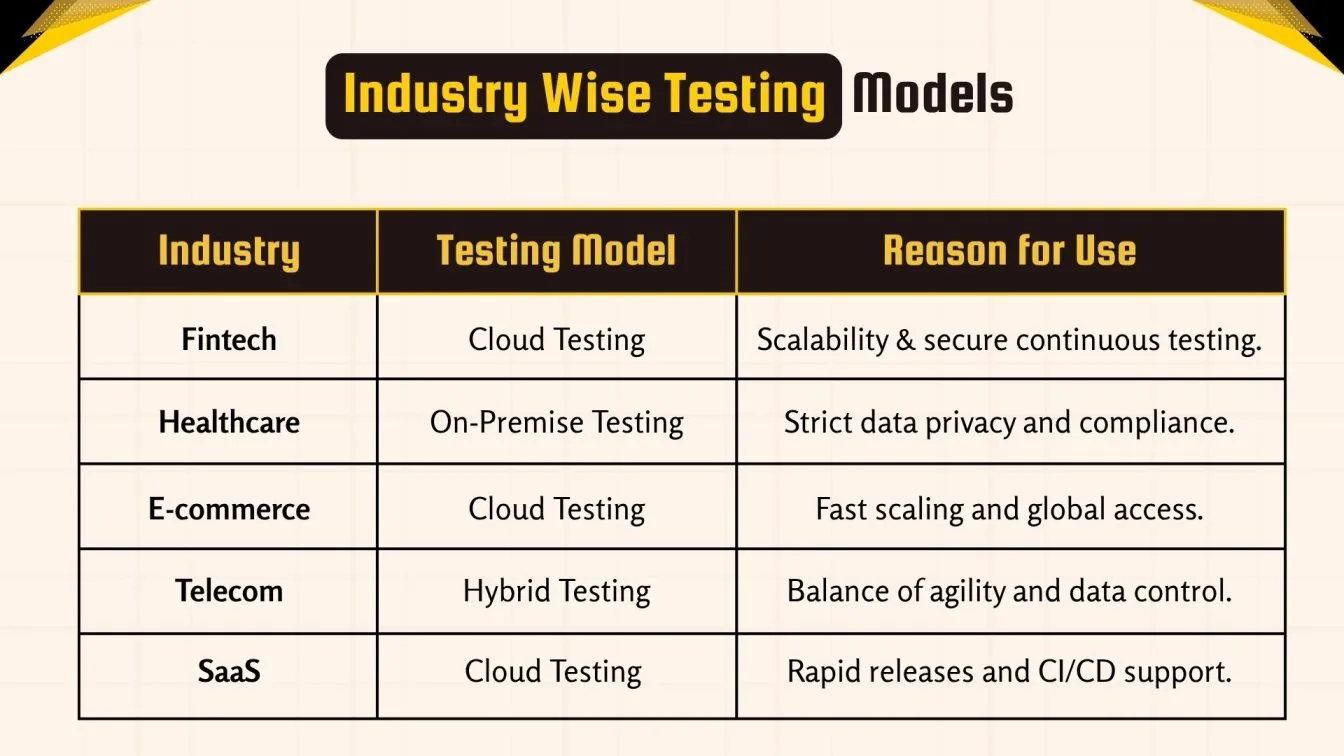
Use Case Examples:
- Fintech companies use cloud platforms for software performance testing while maintaining on-premise systems for sensitive transactions.
- Healthcare providers use on-premise testing to comply with HIPAA while leveraging cloud for mobile app validation.
- E-commerce businesses benefit from cloud scalability during peak seasons.
- SaaS companies implement cloud-native CI/CD and cloud testing to accelerate delivery cycles.
- Telecom and manufacturing sectors use hybrid models to support legacy infrastructure and modern cloud platforms.
Choosing the right testing model helps organizations maintain compliance, optimize costs, and improve software quality tailored to their sector.
Conclusion: Choosing the Right Software Testing Strategy for Your Business
Your company’s size, budget, security needs, and digital maturity influence the choice between on-premise and cloud testing.
- On-premise testing is better suited for organizations that require strict data security, regulatory compliance, and full control over their testing environments. It minimizes risks related to data privacy and is ideal for industries like finance, healthcare, and government, where sensitive information must be tightly guarded.
- Cloud testing excels in scalability, flexibility, and cost-effectiveness. It enables rapid environment provisioning, supports continuous integration/continuous delivery (CI/CD), and reduces the need for heavy infrastructure investments. This makes it a preferred choice for startups, SaaS providers, and teams practicing agile and DevOps methodologies.
Before choosing, evaluate your existing infrastructure, team expertise, tools, and risk tolerance. Aligning your testing strategy with business goals ensures improved software quality, faster releases, and sustained competitive advantage.
People Also Ask
👉 What factors should businesses consider when migrating from on-premise to cloud-based testing?
Businesses should consider scalability, security, cost, and integration ease when migrating from on-premise to cloud-based testing.
👉 What are the hidden costs or challenges businesses face when choosing a testing environment?
On-premise setups may incur high maintenance costs, while cloud testing can lead to unexpected usage charges. Tool compatibility and data security are common challenges in both.
👉 What is a hybrid testing model, and how can it balance cloud and on-premise testing advantages?
A hybrid testing model combines cloud scalability with on-premise security to optimize flexibility and control.
👉 How can compliance requirements influence the choice between cloud and on-premise testing?
Compliance requirements drive the choice by determining data residency, security controls, and audit capabilities between cloud and on-premise testing.
👉 How do deployment models impact testing efficiency and flexibility?
Deployment models affect testing efficiency and flexibility through resource scalability, accessibility, and environment provisioning speed.



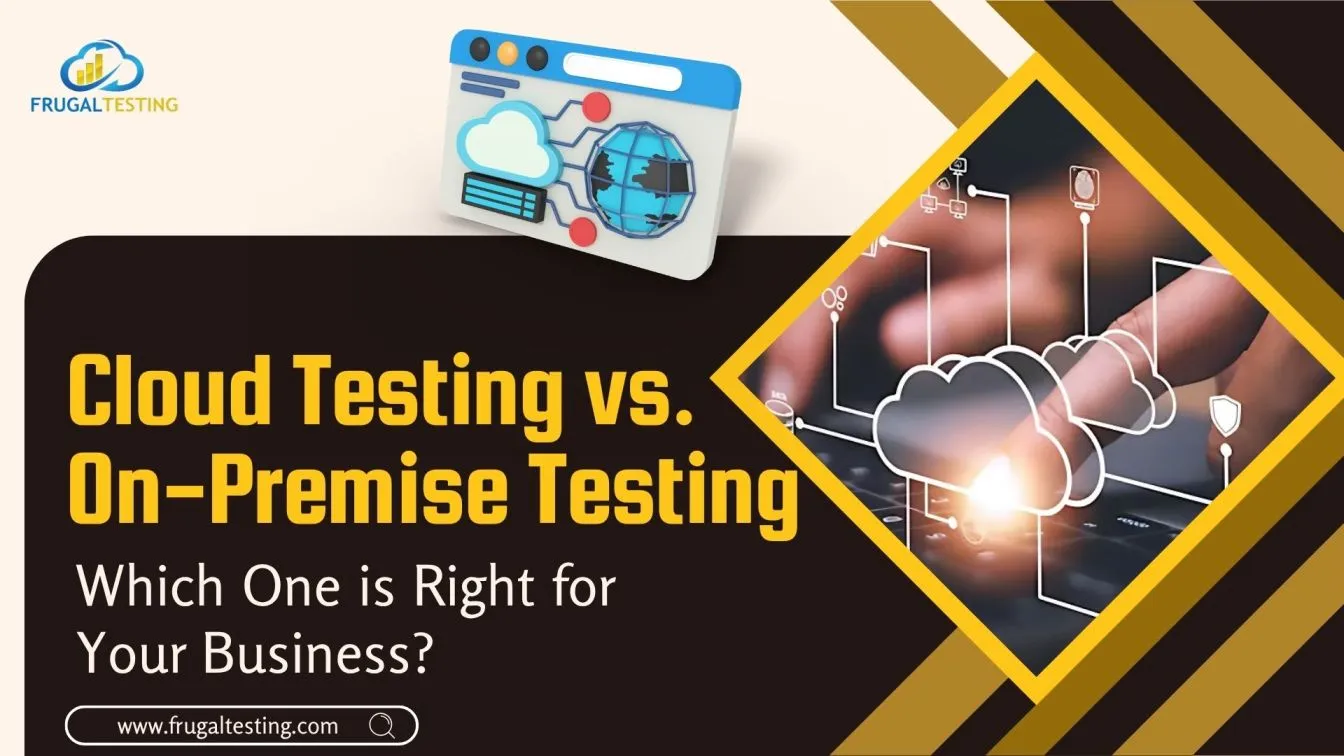

%201.webp)

